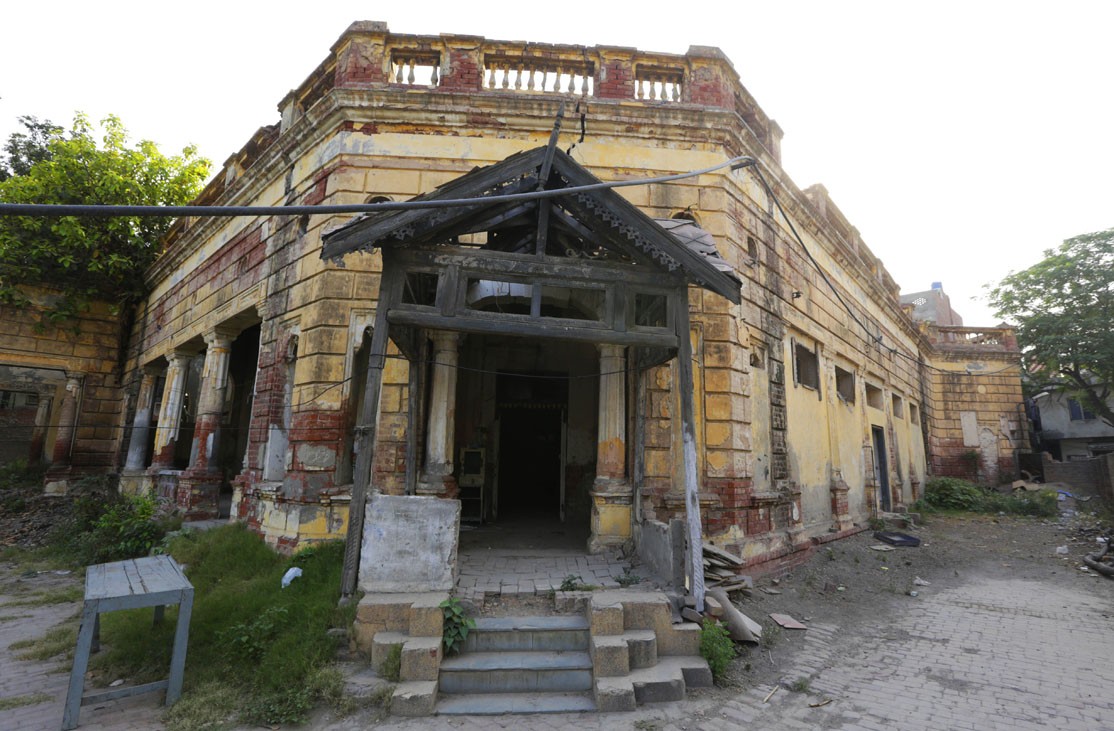
Queen’s Road is a mess, much like most of Old Lahore, due to commercialisation. Thankfully, these cosmetic changes have not yet become part of the city’s psyche

Lahore continues to get one facelift after another. The city of today has very little in common, with what was, ten years ago. And if you go even further back, say, into the eighties and further, well, it’s a completely different beast altogether.
And it’s not just cosmetic. Even identities are changing. Krishin Nagar has become Islam Pura; Lawrence Gardens, Bagh-e-Jinnah.
Thankfully, the colonial footprint in Lahore was spread far and wide over a considerable period of time, and these cosmetic changes have not yet become part of the city’s psyche. There is Lady Willingdon Hospital and the Convent of Jesus and Mary, Aitchison College and The Mall, Gulab Devi and Free Mason Hall. More than the institutions, are the roads: Cooper and Mcleod, Lytton and Chamberlain, Lawrence and Hall. Most of these were named after illustrious Britishers who served in the area during the Raj. All except Queen’s Road.
While the jury is still out on how this name came to be, rumour has it that it was named after Queen Victoria’s statue that used to be the centre piece at Charing Cross, one end of the road. Hence, Queen’s was the road that led to the Queen. Unfortunately, she is not there anymore, but the name has survived. For how long is anybody’s guess.
Today, Queen’s Road is a mess, much like most of Old Lahore. Houses have been torn down to give way to commercial plazas and workshops. All the way from Mozang Chungi (today called Qurtaba Chowk) to Charing Cross, Queen’s has not many remnants left of its grand past.
"In our times, between 1949 and ‘60, there was not a single commercial entity here," says Salahuddin Tariq, a former resident of 12, Queen’s Road. "As kids we used to rent bikes, for an anna an hour, and ride up and down the length of the road, without a care in the world."
The first commercial entity to open up in this area was Goldsmith Jewellers, and that too was more a part of the Charing Cross dynamics than the Queen’s Road itself. There was, however, the curious case of Taj Din Top Maker. Widely renowned to be the best "lattoo wala" in the city, Taj Din was a household name. Every child had at least one, if not numerous, of his contraptions.
Still, Queen’s Road at that time was a "sleepy, leafy place," remembers Hersh Mehra, grandson of Dina Nath, owner of the grand estate of 5 Queen’s Road. The word ‘estate’ is used deliberately. Along the Queen’s were a total of 30 houses, covering both sides. What is Ganga Ram Hospital today was one such estate. Same is the case with Fatima Jinnah Medical College.
"Because of the sheer size of these estates, everything was contained and self sufficient: we even had a billiards room and a library," adds Mehra. And with large lawns and leafy trees, nobody was really pushed to go out in to the street.
Still, due to the compact number of families on Queen’s Road, according to Tariq, the concept of neighbourhood was strong, especially amongst the ladies. "There was one woman who used to call us over whenever she made ice cream, the womenfolk would all gather and gossip, whilst us children would stuff our faces."
As was the norm at the time, most of these families had at least one horse-drawn carriage (aka Tonga) at their disposal, along with a car or two. These carriages had to be registered with the local authorities, and had a dedicated resource to manage it.
Same with the cars. Queen’s didn’t have a hundred workshops like it does today. "The driver was also the mechanic, like the cook was the barber."
Most of this support staff also lived on the estates. And as is the natural course of nature, they had children. It didn’t matter who one was, everyone needed a playmate.
While Queen’s Road itself was a sleepy hollow, its close proximity to The Mall ensured that action was nearby. And there was also Plaza Cinema, then one of the best picture houses in Lahore. On the first floor of this establishment was a Cabaret dance school, run by a Chinese lady. Many young ladies, from Queen’s Road and beyond, would take classes here.
At the other end of this iconic lane was the office of the Salvation Army. Many old residents remember sitting in their gardens or rooftops, when the Salvation Army Band would begin its practice. "We’d have the occasional car peter across, but by and large, there was a peaceful quiet about the place," Tariq recalls. "So much so that we’d occasionally even hear the lions roar all the way from the Lahore Zoo."
However, as with estates of such sizes, many fell into legal disputes. And with the onset of commercialisation, slowly the families began to move away.
Today, you’ll be hard pressed to find any remnants of the grandeur that once was Queen’s Road. One of the last old structures that remains is of Khan Clinic, at 8 Queen’s Road. How long that stays is anybody’s guess. "We lived in a different era," Mehra says. "Lahore was a grand old town. Today, it is fast turning into a faceless metropolis."
The web version of this article has been edited to correct factual errors.